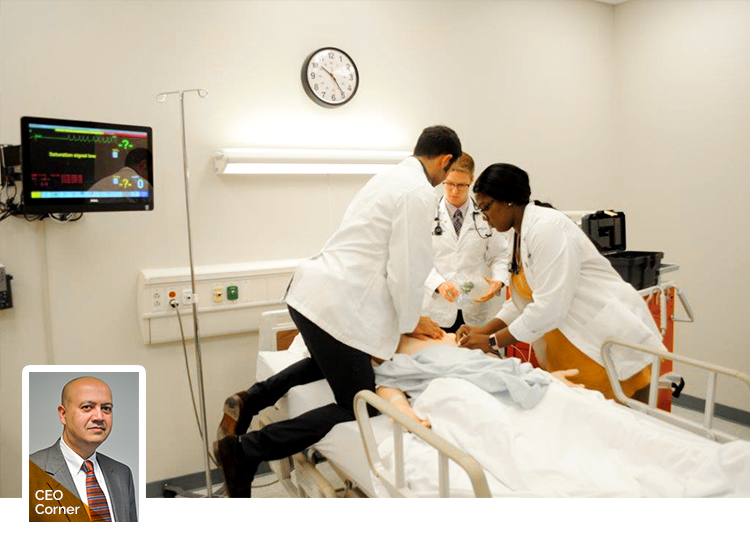Anurag Singh, EMS President and CEO, shares valuable insights on how healthcare systems can ensure new protocols, procedures, and training are delivered more uniformly.Training programs need to be based on patient safety goals and an understanding of where and how patient safety gaps occur. For example, what are the “hot zones” in a hospital? If you consider patient workflows as an arterial system, you need to find out where the clogged arteries are. It’s not only a question of individual competency, but also a question of workflow management and team communication.
New training protocols need to take these “clogged artery” scenarios into consideration. Like the way our national first responders plan and train for disaster preparedness, medical systems and individual hospitals need to proactively train for patient ebbs and flows. These are the frequently seen, seldom trained scenarios.
If the same training is not in place at each location, then you can be assured that the same standard operating procedure will also not be followed – resulting in gaps and inconsistent patient care. These factors result in patient safety risk.
How can healthcare systems ensure that every patient at every location is treated per standard operating procedures? By building integrated simulation training programs that are managed centrally – with integrated curriculum assessments, learner performance, and instructor performance. This will ensure that patient quality of care is uniform based on a standardized training program. Consistently delivered quality training programs are critical to mitigating risk for healthcare systems.

